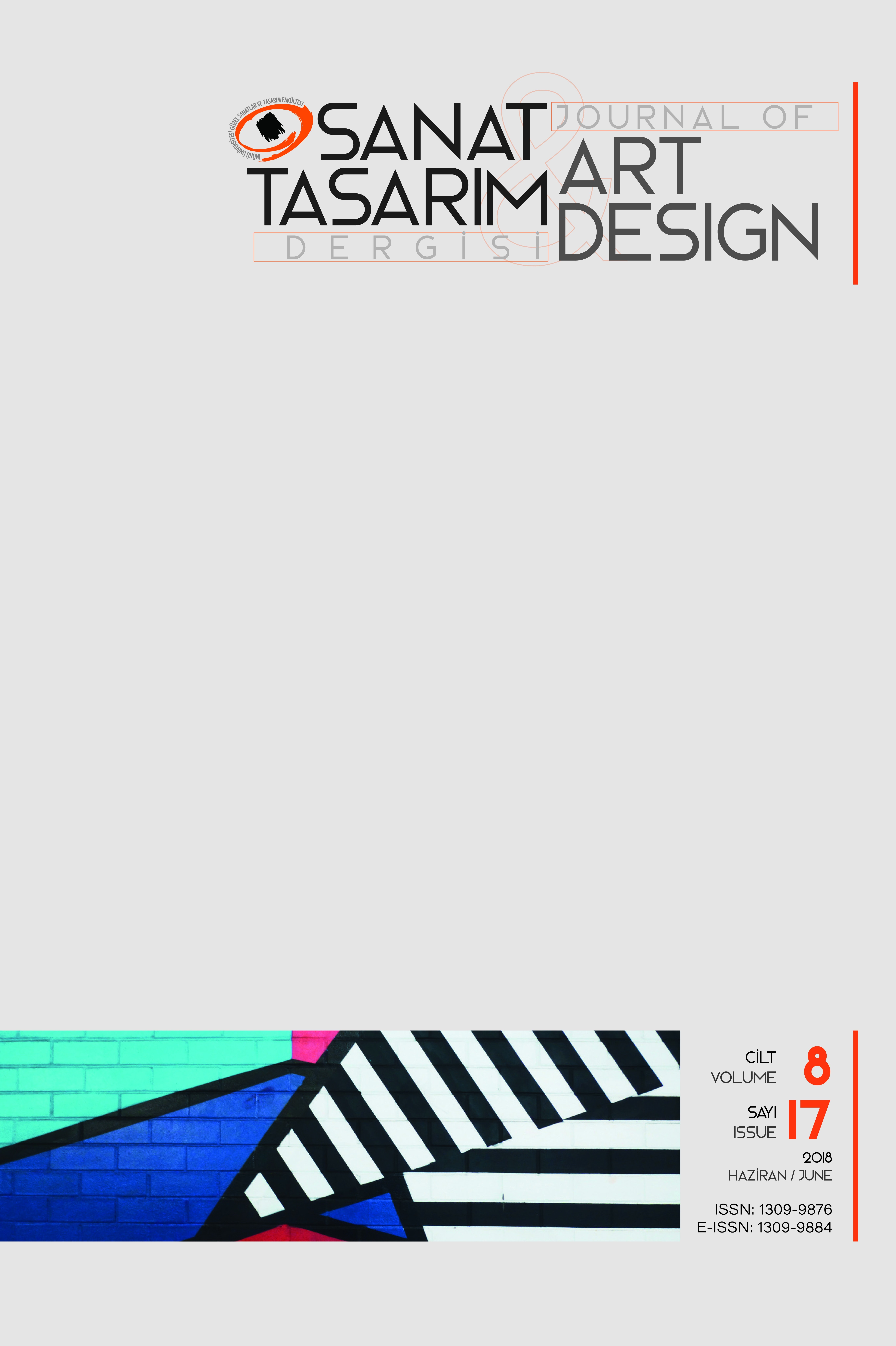Ekolojik Sürdürülebilirliğin Konut Tasarımında Değerlendirilmesi
konut tasarımı, çevresel etki, konut-kullanıcı ilişkisi, erişilebilirlik, ekoloji, house design, environmental impact, house-user relationship, accessibility, ecology
___
- AlSharhan, D., Özçelik, S. E. (2011). Kingspan Lighthouse: Watford, Hertfordshire, United Kingdom. Arizona State University
- Carson, R. (1962). Silent Spring. Houghton Mifflin. United States.
- Heidegger, M. (1993). Building Dwelling Thinking. Basic Writings. Washington University Eres Cover Sheet. 343-364.
- Hayles, C. S. (2015). Environmentally Sustainable Interior Design: A Snapshot of Current Supply of and Demand for Green, Sustainable of Fair Trade Products for Interior Design Practice. International Journal of Sustainable Built Environment, 4(1), 100-108
- Kasimova, R.G., Tishin, D., Obnosov, Yu. V., Dlussky, G.M., Baksht, F.B. & Kacimov, A.R. (2014). Ant mound as an optimal in constructal design: Solar irradiation and circadion brood/fungi warming sorties. Journal of Theoretical Biology, 355, 21-32.
- Macfarlane, W.W., Wheaton, J.M., Bouwes, N., Jensen, M.L., Gilbert, J.T., Hough-Snee, N. & Shivik, J.A. (2015). Modelling the capacity of reverscapes to support beaver dams. Geomorphology. (Article in Press) : 1-28.
- McDonough, W., Braungart, M. (2002). Cradle to Cradle: Remaking the Way We Make Things. North Point Press. United States.
- Ruff, C., Olson, M. (2009). The attitudes of interior design students towards sustainability. International Journal of Technology and Design, 19(1) : 67-77
- Senbel, M. (2015). Leadership in sustainability planning: propagating visions through empathic communication. Journal of Environmental Planning and Management, 58(3) : 464-481 Thomas, A. (2006). Design, Poverty and Sustainable Development. Design Issues, 22(4), 54-65
- Tromp, N., Hekkert, P., Verbeek, P. P. (2011). Design for Socially Responsible Behaviour: A Classification of Influence Based on Intended User Experience. Design Issues, 27(3), 3-19
- Yüksek, İ., Esin, T. (2013). Analysis of Traditional Rural Houses in Turkey in terms of Energy Efficiency. International Journal of Sustainable Energy, 32(6), 643-658
- Wahl, D. C., Baxter, S. (2008). The Designer’s Role in Facilitating Sustainable Solutions. Design Issues. 24(2), 72-83
- World Commission on Environment and Development. (1987). Our Common Future United Nations Conference on Environment and Development. (1992). Rio Deklerasyonu (agenda 21),
- URL 1. (2016). http://lemerg.com/782285.html. Erişim Tarihi: 11.05.2016
- URL 2. 2016. http://www.kingspantek.co.uk/Case-Studies/Kingspan-Lighthouse. Erişim Tarihi: 11.05.2016
- URL 3, 2016. http://makeitright.org. Erişim Tarihi: 11.05.2016
- URL 4, 2016. http://www.housing.nsw.gov.au/social-housing/redevelopment/lilyfield-redevelopment. Erişim Tarihi: 11.05.2016
- ISSN: 1309-9876
- Başlangıç: 2011
- Yayıncı: İnönü Üniversitesi
Mevlevi Âyinlerinin Yüzyıllara Göre Dağılımı
Lif Sanatının Öncülerinden Ed Rossbach
Trabzon Meydan Düzenlemesinin Kullanıcı Talepleri Bakımından Değerlendirilmesi
Buket Özdemir Işık, Dilek Öztürk Nohut, Esra Lakot Alemdağ
Tasarımda Birlik Kavramının Öğrenci Çalışmalarında İrdelenmesi: Mimari Tasarım Dersi Örneği
Serap Yılmaz, Sema Mumcu, Tuğba Düzenli, Ali Özbilen
Tekirdağ Kent Merkezi Dış Mekân Tasarım Elemanlarının Antropometrik Açıdan İrdelenmesi
Elif Ebru Şişman, Pınar Gültürk
Beste Karakaya Aytin, Pınar Kısa Ovalı
Adnan Metin KARKIN, Mehmet Sadık DOĞAN
Okul Öncesi Müzik Eğitiminde Öğretmen Faktörü
Ekolojik Sürdürülebilirliğin Konut Tasarımında Değerlendirilmesi
Gençlere Yönelik Peyzaj Tasarımı: Trabzon Haluk Ulusoy Spor Tesisleri
